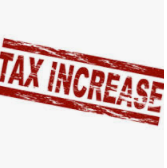
Disaster Relief: What the IRS giveth, the IRS taketh away. Or so it seems for disaster relief taxpayers until you get to page 4 of the collection notice (Part One)
Imagine you live in a county that has been battered by storms or wildfires so severe that the federal government has included your county in a disaster declaration. Imagine that the IRS grants you an extra four or six months to file your tax return and make your tax payment. Then imagine you file your return early but properly decide to hold off on making payment until the postponed deadline. That is what an estimated one million taxpayers living in California and seven other states (Alabama, Arkansas, Florida, Georgia, Indiana, Mississippi, and Tennessee) have done in the last few months. To their surprise and dismay – and contrary to IRS guidance and press releases – those taxpayers are now receiving “notice and demand” collection letters from the IRS telling them their payments are currently due and the IRS will begin to charge interest and penalties if the taxpayer doesn’t pay by a specified date on the notice which is months earlier than IRS guidance permits. Confused taxpayers and practitioners are wondering why they are receiving a balance due notice since they live in a disaster relief area and had months of additional time to pay.
Short answer: Disaster area taxpayers can ignore the CP14 collection notice when the original due dates fall within the postponement period. The payment due date on the collection notice is wrong. The correct payment due date is stated on the disaster declaration. Taxpayers can verify the correct payment due date by checking irs.gov.
If you want to understand this perplexing situation, read on, but it involves several twists and turns.
Unfortunately, the answer lies in a combination of complex laws, inflexible technology, and confusing collection notices that created a toxic brew. By law, your tax liability is deemed “assessed” when the IRS processes your tax return, then the IRS is generally required to send a “notice and demand” for payment of tax within 60 days of the assessment. The IRS believes this is true even if a disaster declaration gives you more than 60 days after filing your return to pay the tax. To make matters worse, the IRS can’t quickly change the main text of its collection notice to avoid confusion. The IRS’s solution: Include a short paragraph on page 4 of the notice that essentially says never mind – ignore the 3 pages you just read. Now the IRS is sending follow-up letters to these taxpayers acknowledging that payment is not due until the date specified on the disaster declaration.
What to Know If You Received an Erroneous Collection Notice While Living in a Disaster Area
Many taxpayers who live in disaster areas are confused and frustrated because the IRS sent them a collection notice and demand for tax payments with an incorrect due date. In technical terms, the IRS based its decision on its legal interpretation of its obligation to issue a “notice and demand” within 60 days of an “assessment.” Compounding the problem is the IRS’s inability to quickly redesign its forms or reprogram its information technology (IT) systems to provide more accurate information.
In the beginning of 2023, the IRS postponed deadlines for filing tax returns and making tax payments until October 16, 2023, for taxpayers affected by severe weather in parts of California. In two California counties, Modoc and Shasta, the filing and payment date was postponed until August 15, 2023. The IRS also postponed due dates for seven other states, which was a welcome relief to millions. (See NTA Blog: Disaster Relief: What to Know If You’ve Been Affected by a Federally-Declared Disaster and the Recent Additional Time Provided For Parts of Alabama, California, and Georgia).
So far, over one million taxpayers living in a disaster area filed their returns early with a balance due, expecting to make a timely payment by the postponed date. Unfortunately, for taxpayers covered by a disaster declaration, the IRS followed its normal collection procedures and mailed an initial collection notice and demand, Notice CP14. These collection notices reflected an incorrect due date. The notices provided 21 days (ten days for taxpayers with balances of $100,000 or more) to pay the balance even though payment was not required prior to August 15 or October 16. The collection notices also informed the taxpayers that interest and penalties would accrue after the due date reflected on the front page of the notice. All of this is wrong for taxpayers covered by disaster declarations when the original due dates fall within the postponement period. To remedy the incorrect date, the IRS included a short paragraph on the back of page 4 of the Notice CP14. However, the additional language did not solve the problem. Instead, it led to confusion and questions.
Understanding Why the IRS Sends Notice and Demand for Payment
It might help to understand why the IRS sent a notice and demand for payment. IRC § 6303(a) requires the IRS to send a notice and demand for payment as soon as practicable, and within 60 days of assessing a tax (e.g., where a taxpayer files a balance due return) to initiate the collection process. The IRS uses Notice CP14 to meet this requirement. The notice and demand includes a deadline to pay because under IRC § 6601(e)(2)(A), the IRS does not charge interest if the amount owed is paid within 21 days (ten days if the amount owed exceeds $100,000). Because of these deadlines, the general IRS practice is to send out a Notice CP14 as soon as a tax return is filed, tax is assessed, and amounts are due. Taxpayers in declared disaster areas are not required to pay until the postponed deadline. But because there was a filed return, an assessment, and a balance due, IRS systems automatically sent a notice and demand for payment within 60 days of assessing a tax. The IRS did not reprogram its system to generate the notice based upon the postponed payment due date for disasters.
In the future, when the IRS postpones filing and payment deadlines for taxpayers affected by disasters, I recommend the IRS reprogram its systems to delay the issuance of the notice, including Notice CP14 mailings, or provide the correct due date on page one of the notice. Instead of reprograming its systems, the IRS mailed a Notice CP14 even though the payments were not due until the postponed date of August 15 or October 16. The IRS attempted to explain early CP14 notices to taxpayers covered by a disaster declaration who filed their balance due return in a brief paragraph on page 4. The inserted language, however, still resulted in additional confusion for many who contacted the IRS, TAS, and their return preparers. The IRS takes the position that it is required to issue the notice and demand within 60 days of the assessment and contends that the postponement of time for payment of tax under IRC § 7508A does not change the last date prescribed for payment of tax in IRC § 6303(b).
More immediately, assuming the IRS continues to believe it must send the CP14 notice, I strongly encourage it to include a first page that says, in large type, that it is sending this notice to comply with a legal requirement but that taxpayers living in a disaster area have until the date specified in the disaster declaration and will not face interest charges or penalties if they pay by the postponed date. If the IRS puts that language on page 1 in large type instead of on page 4 in small type, it could avoid much of the confusion.
Conclusion
The difficulty of reprograming the antiquated IRS IT systems to modify the Notice CP14 mailing date or payment due date is yet another example of the urgent need to update IRS technology, as I discussed in my March 16, 2023, blog (NTA Blog: National Taxpayer Advocate Urges Congress to Maintain IRS Appropriations But Re-Direct Some Funds Toward Taxpayer Service and Information Technology Modernization) and my April 6, 2023, blog (NTA Blog: IRS Strategic Operating Plan Has Potential to Transform Tax Administration).
In my next post, I will discuss what these taxpayers can expect and provide legislative recommendations to avoid future unintended consequences from disaster declarations. Stay tuned for Part Two!


















Recent Comments